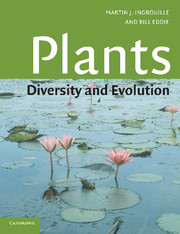Book contents
Chapter 6 - The lives of plants
Published online by Cambridge University Press: 05 June 2012
Summary
There is not a ‘fragment’ in all nature, for every relative fragment of one thing is a full harmonious unit in itself.
John Muir, 1867 (A Thousand-Mile Walk to the Gulf, 1916)When we try to pick out anything by itself, we find it hitched to everything else in the Universe.
John Muir, 1869 (My First Summer in the Sierra, 1911)Plant diversity around the world
A complete treatment of vegetation around the world would be impossible in a whole book let alone a single chapter. Instead, we concentrate on plants that inhabit different environmental extremes. We bring into focus the biotic relations of plants and, in addition, we consider some aspects of plant evolution in relation to the Earth's history and climate change, by looking at plants of islands.
The greatest omission this chapter is an account of the forests of the world. Every botanist should visit a tropical rainforest at least once. No vegetation formation on Earth can compare to tropical rainforest in its staggering wealth of life forms, its diversity of species. It is the ‘Ultima Thule’ of the botanical world, after which everything else falls into perspective.
… I measured my insignificance and climate change, by looking at plants of islands. against the quiet majesty of the trees. All botanists should be humble. From trampling weeds and cutting lawns they should go where they are lost in the immense structure of the forest. […]
- Type
- Chapter
- Information
- PlantsDiversity and Evolution, pp. 252 - 316Publisher: Cambridge University PressPrint publication year: 2006

